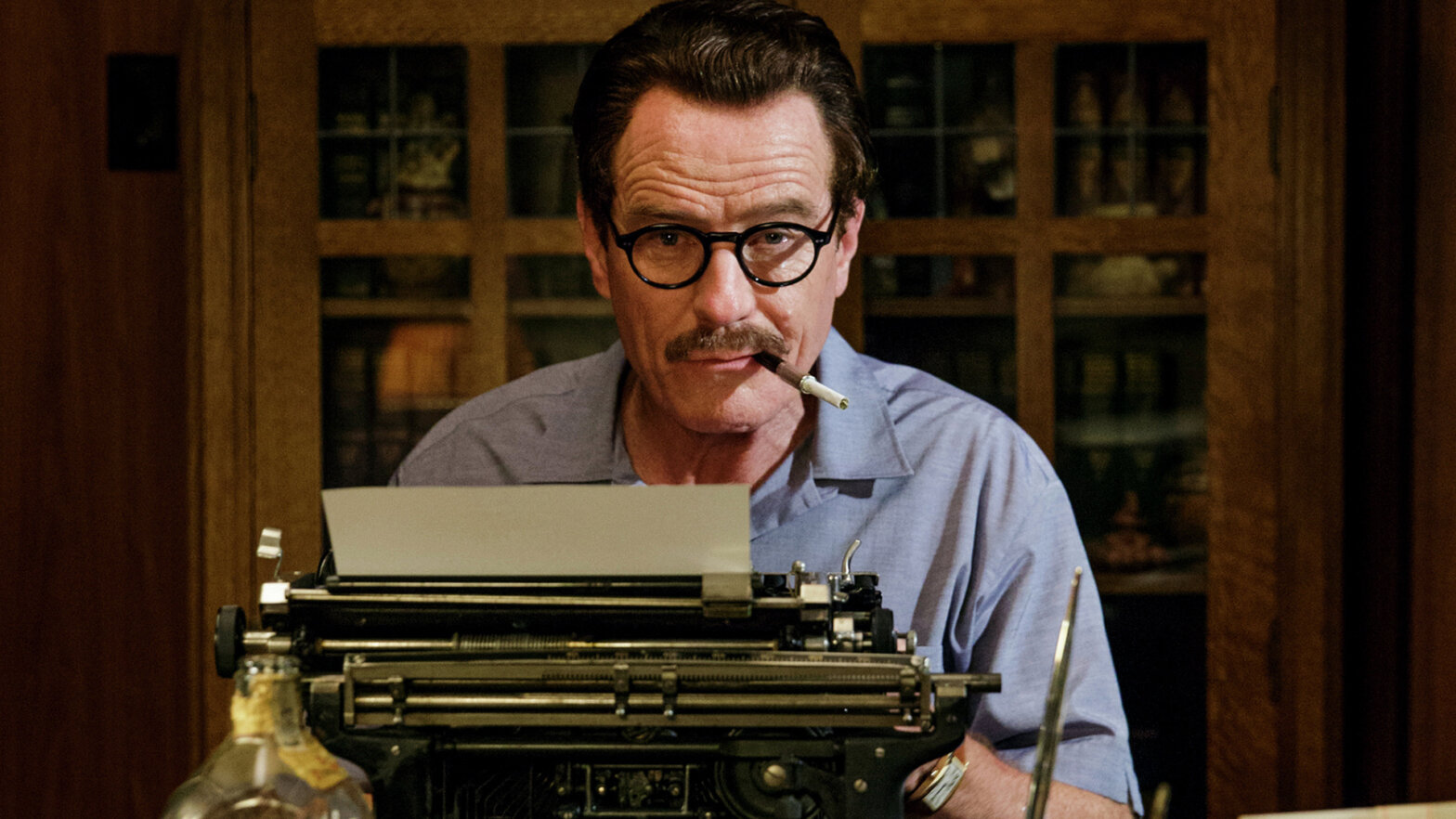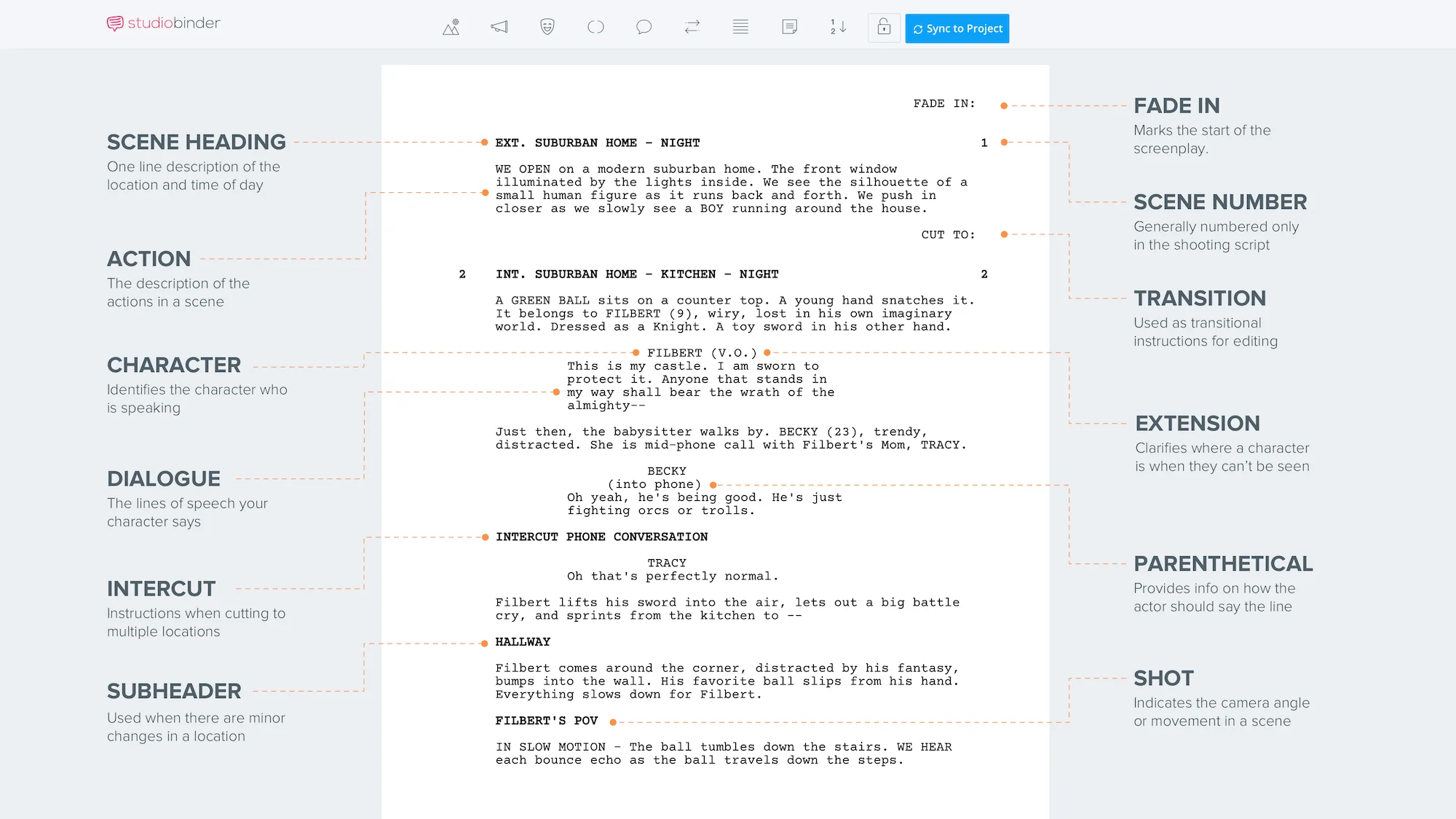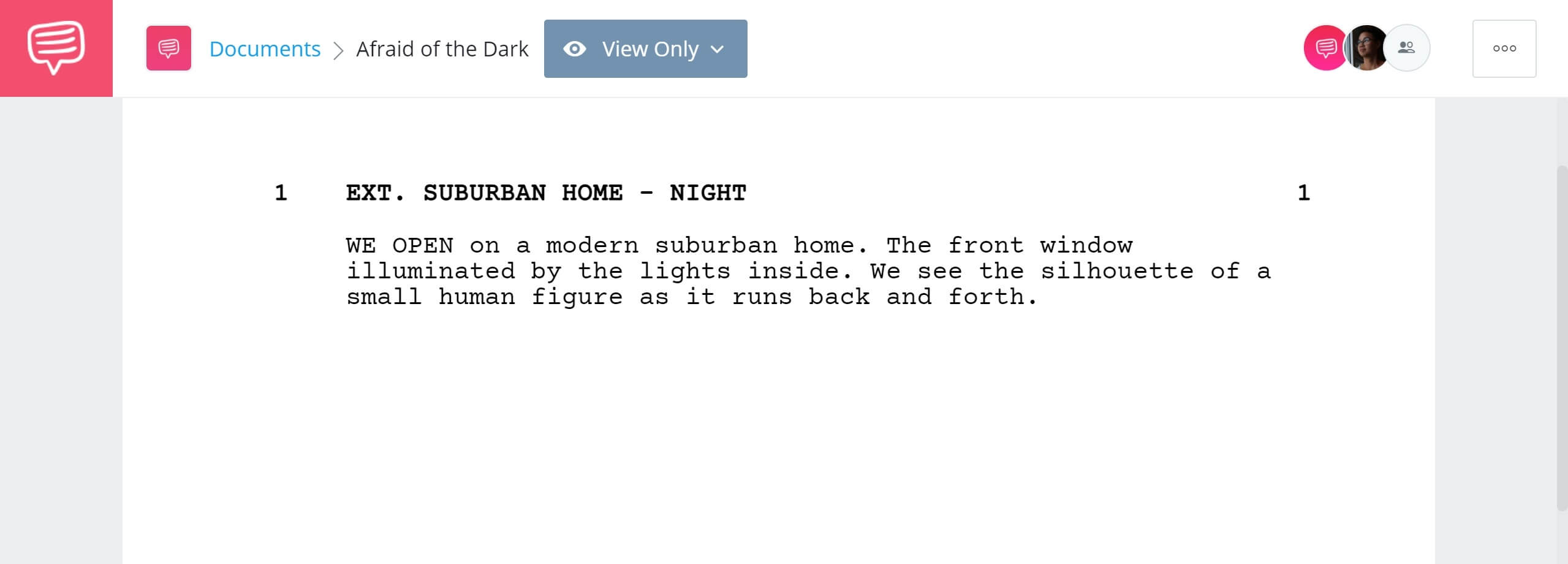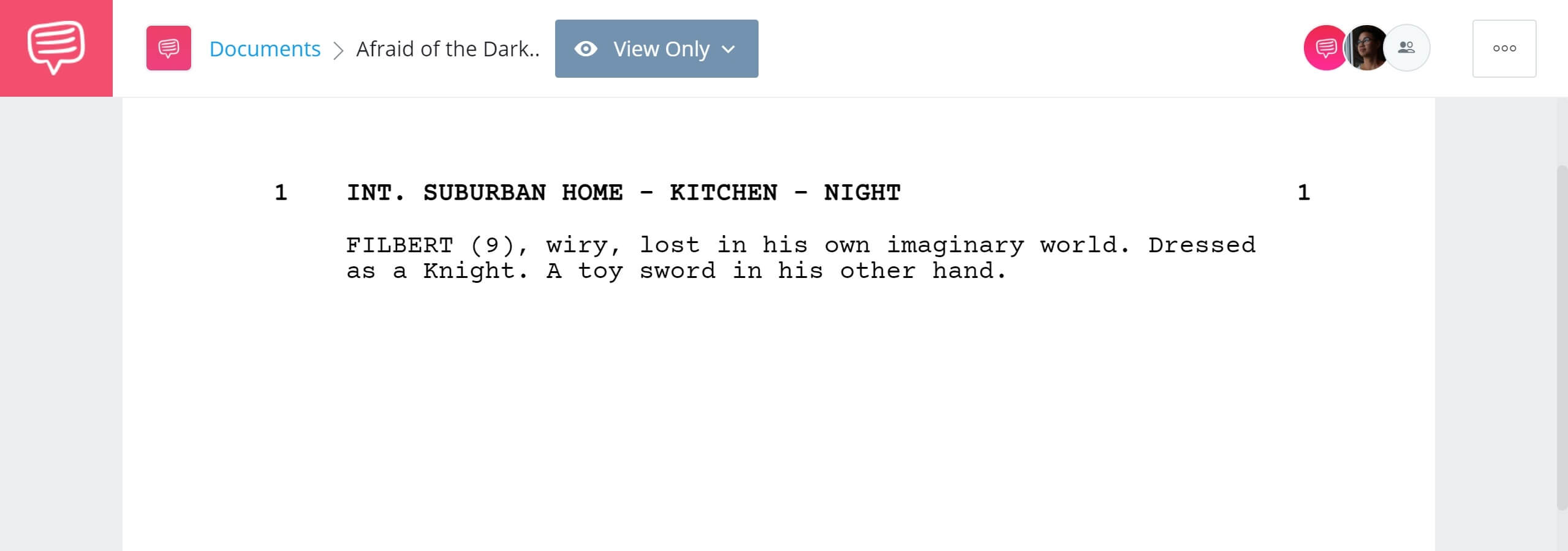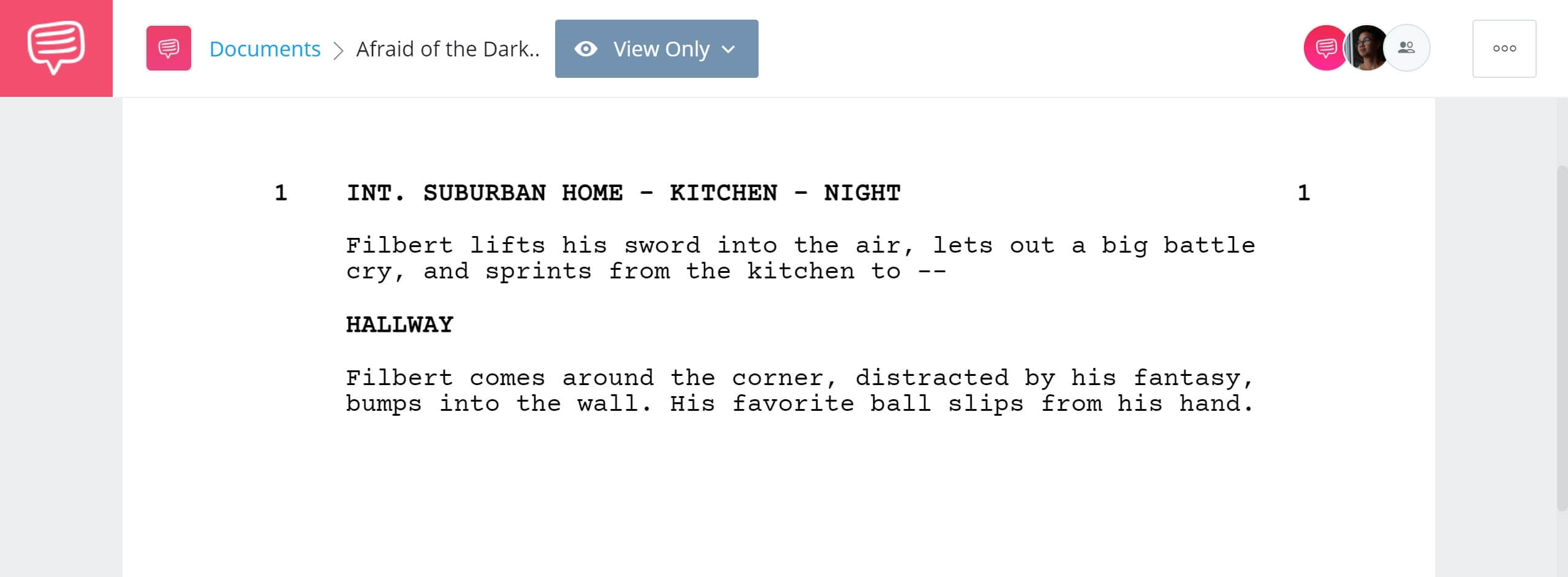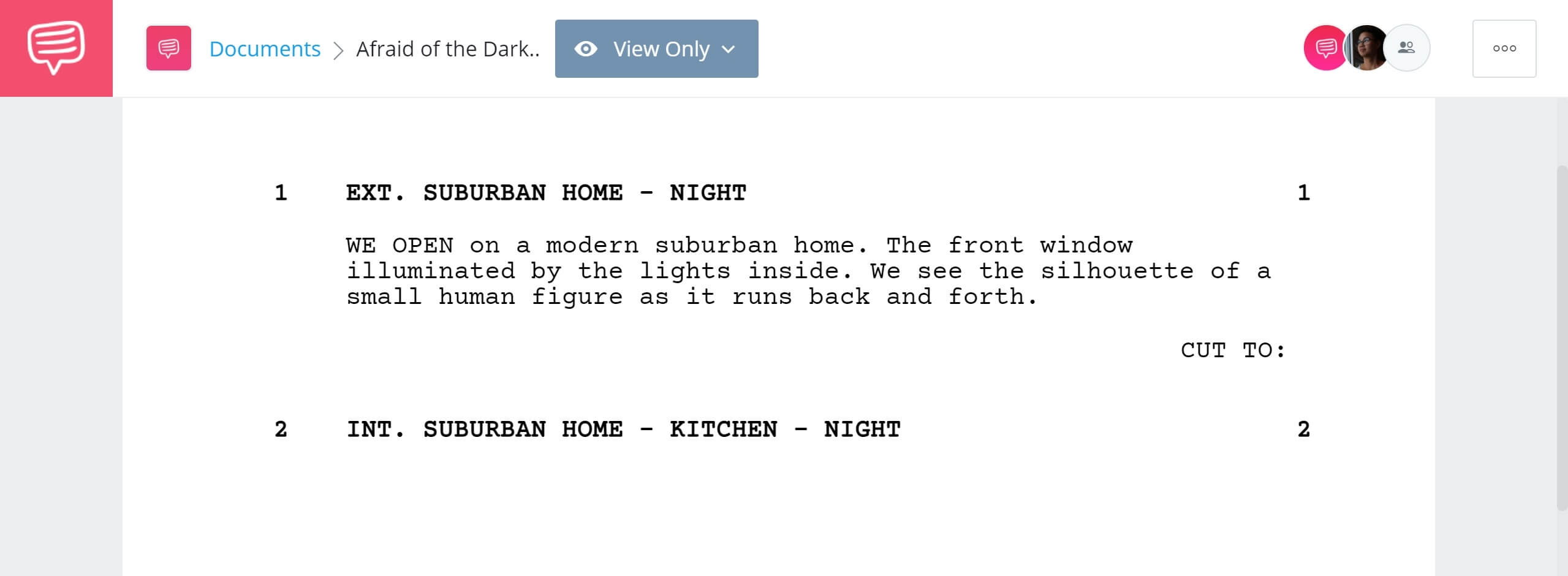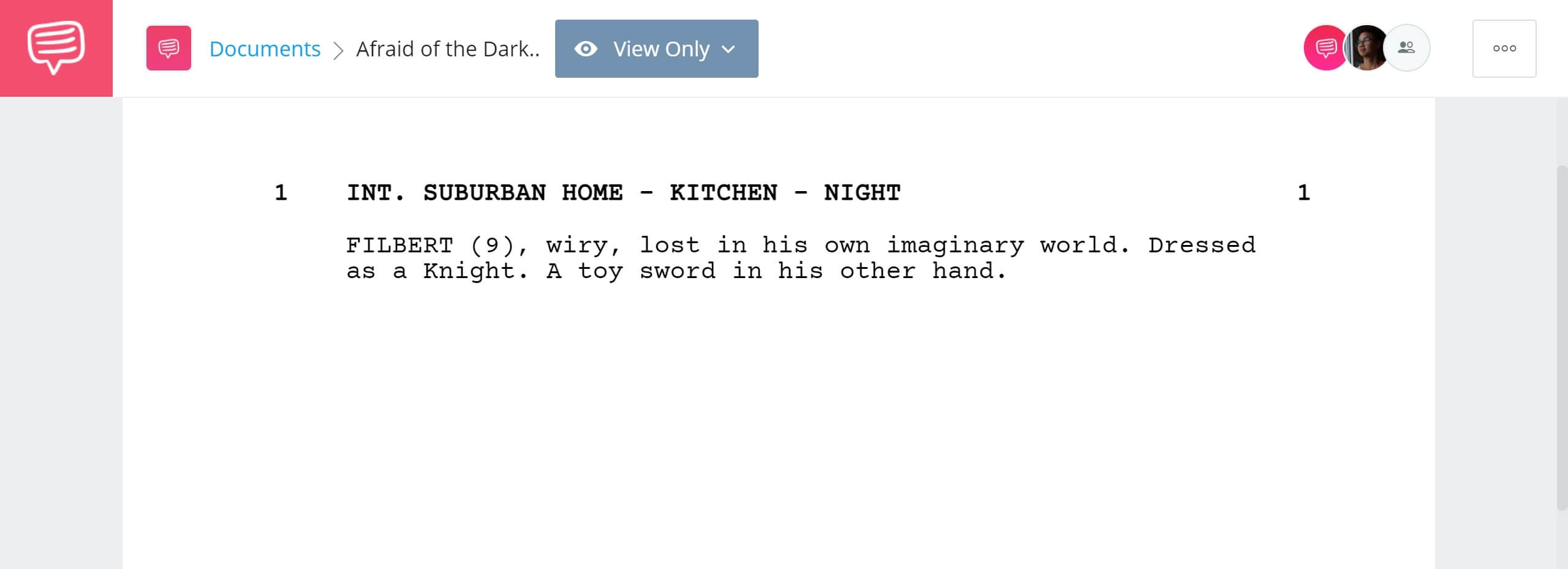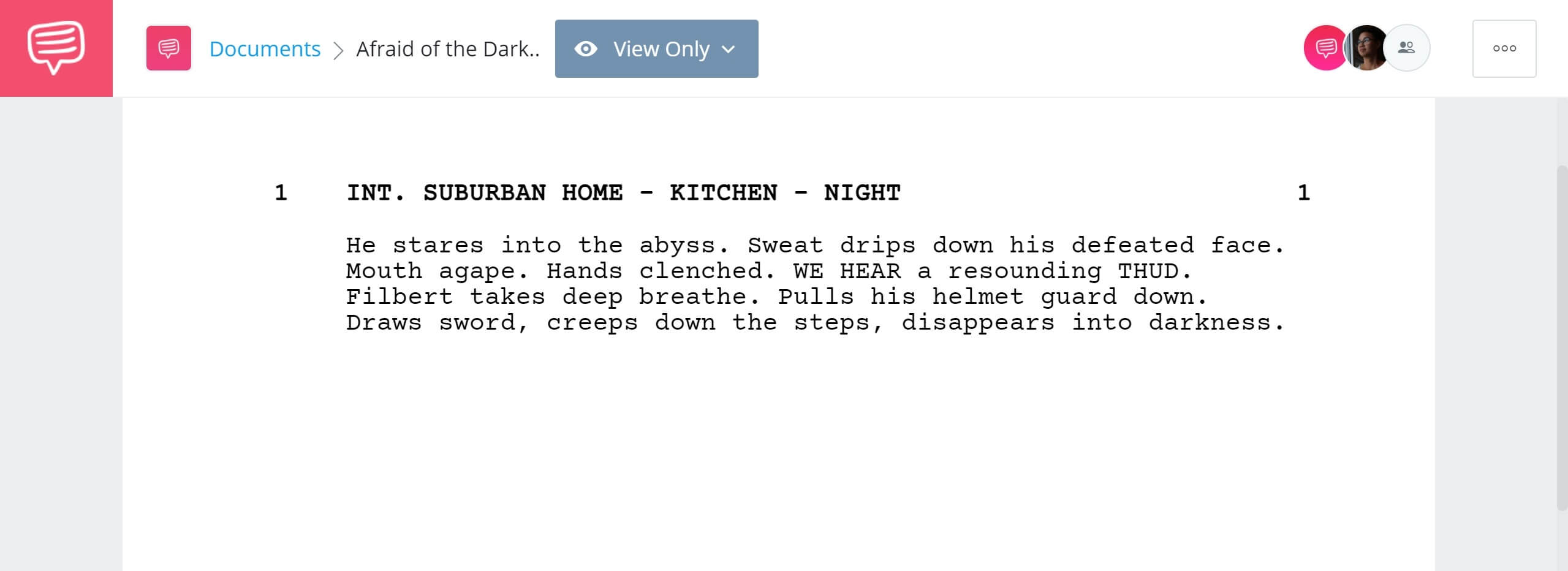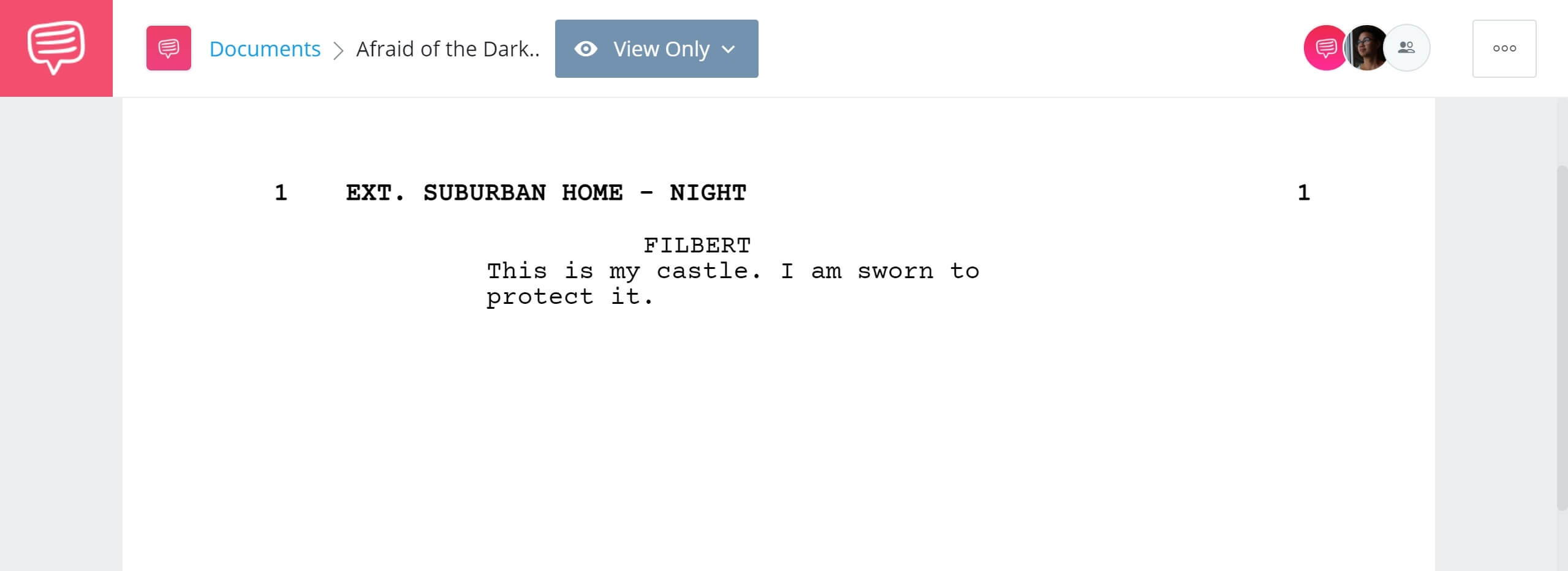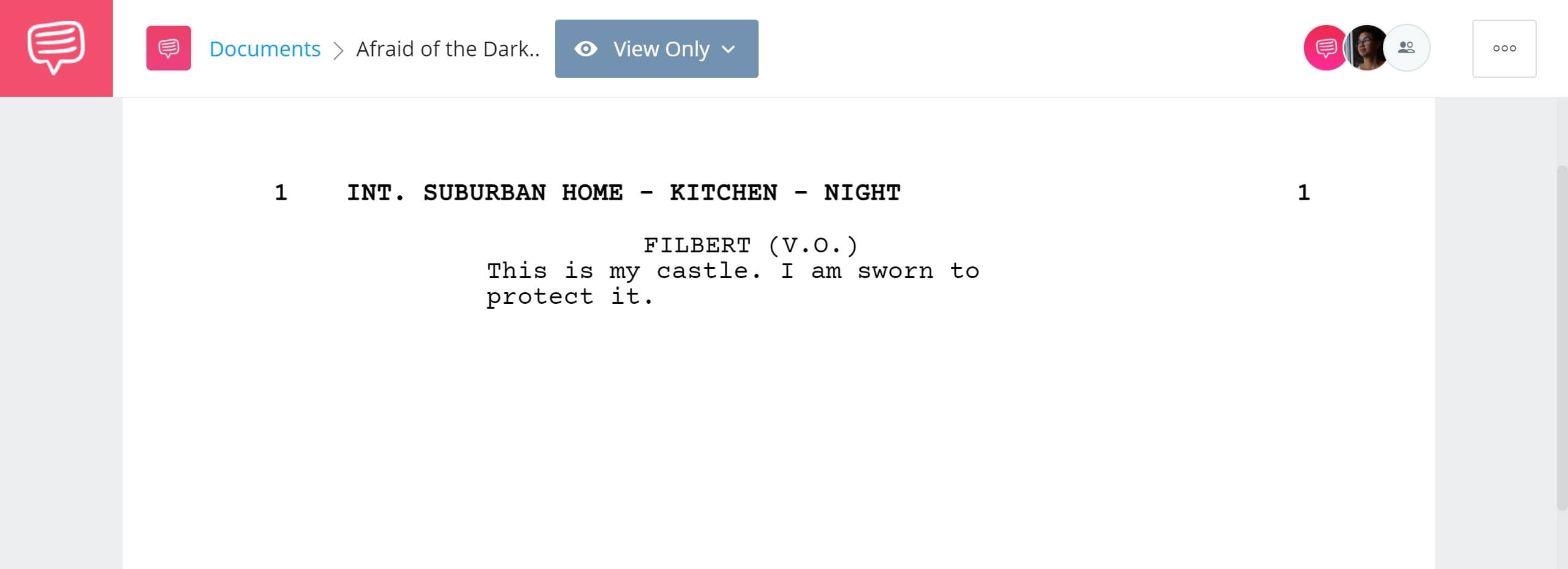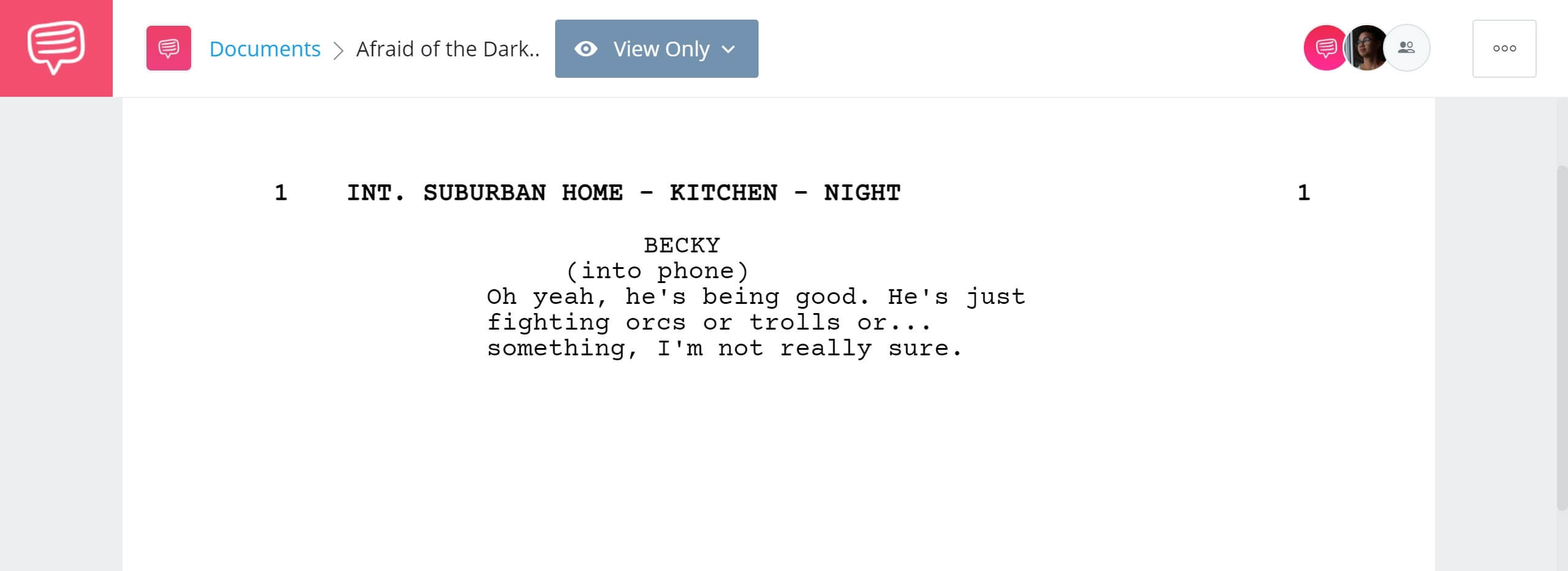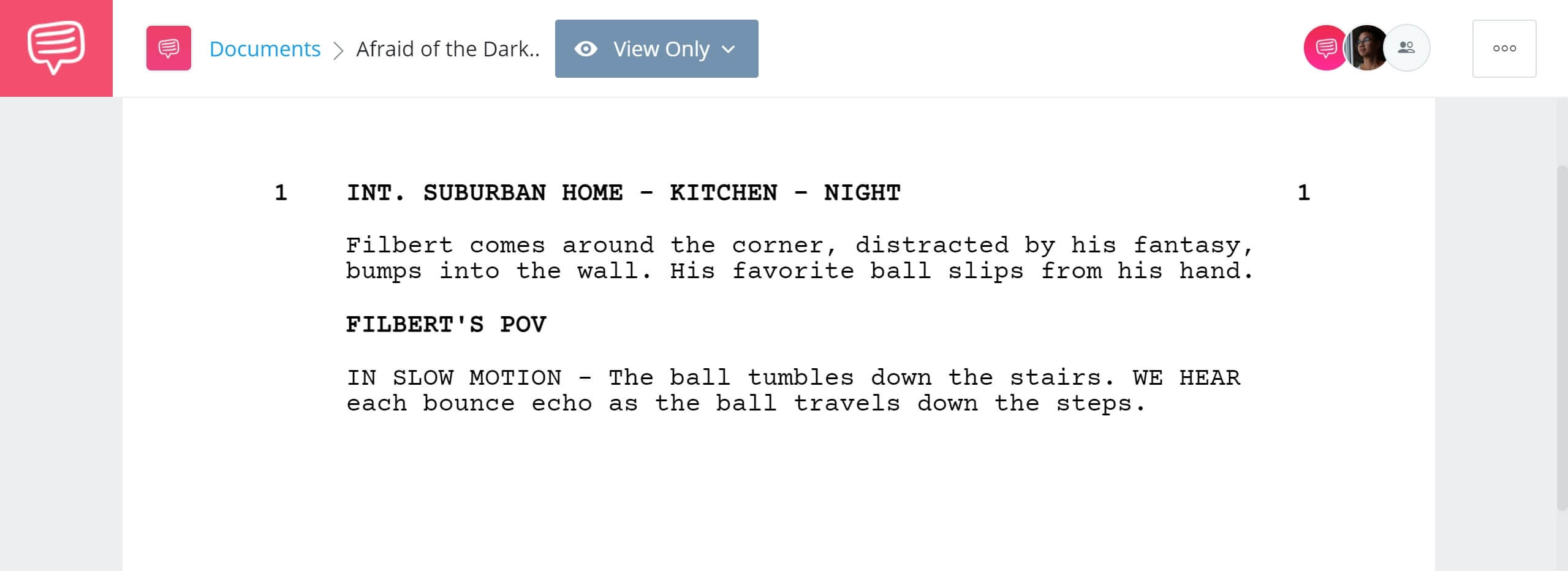Understanding how to write a movie script, also known as a screenplay, can seem daunting at first, but once you understand script format and structure you can then focus on your creativity.
We’ll take you through the process of writing a screenplay so that you can begin building that great movie idea into a professional script.
What Is A Screenplay
What exactly defines a screenplay?
A movie script, also known as a screenplay is a document that ranges anywhere from 70-180 pages. Most movie scripts come in around 110 pages, but there are a number of factors that play into the length.
Before we go too deep into page count, let’s talk about the things you really need to know so that you can get started on your script ASAP.
How To Format a Screenplay
What is standard screenplay format?
Screenplay format is relatively simple, but it’s one of those things that can seem a bit daunting until you’ve actually learned how to do it.
The basics of script formatting are as follows:
- 12-point Courier font size
- 1.5 inch margin on the left of the page
- 1 inch margin on the right of the page
- 1 inch on the of the top and bottom of the page
- Each page should have approximately 55 lines
- The dialogue block starts 2.5 inches from the left side of the page
- Character names must have uppercase letters and be positioned starting 3.7 inches from the left side of the page
- Page numbers are positioned in the top right corner with a 0.5 inch margin from the top of the page. The first page shall not be numbered, and each number is followed by a period.
StudioBinder screenwriting software does all the required formating, so you can focus on the creative. Below is a formatted script example:
Script formatting breakdown in StudioBinder
Many scripts begin with a transition, which may include FADE IN: or BLACK SCREEN. Some place this in the top left, others in the top right of the page where many transitions live. Other scripts will begin with scene headings, or even subheadings of imagery they want to front load.
SCENE HEADING
The scene heading is there to help break up physical spaces and give the reader and production team an idea of the story’s geography.
You will either choose INT. for interior spaces or EXT. for exterior spaces. Then a description of the setting, and then the time of day.
Here’s a screenplay example:
Script format example in StudioBinder Screenplay Writing Software: Scene Heading
There are rare cases where the scene begins inside and goes outside, or vice versa, and in these situations you may write INT/EXT. or EXT/INT.
Some scripts take place all around the world, so often screenwriters will use multiple hyphens to give the scene headings even more detail:
Screenplay format example in StudioBinder Screenwriting App: Scene Heading Details
This helps the screenwriter avoid having to point out the geographical location in the action lines, saving space to write more about the actual story and keep readers engaged in the story… not the formatting.
SUBHEADING
Often, writers will use subheadings to show a change in location without breaking the scene, even if the scene has shifted from INT. to EXT.Here’s a script example:
Script formatting example in StudioBinder Sciptwriting Software: Scene Subheading
It is assumed that readers will understand the change in space while retaining the idea that the time of day is the same - even continuous.
The reason many writers do this is to avoid the notion that we’ve entered an entirely new scene, though you could always include CONTINUOUS in place of DAY or NIGHT by creating an entirely new scene heading.
It’s a matter of personal style and rhythm vs. production considerations.
TRANSITIONS
In the bottom right of the page you will place transitions, but in modern screenwriting these seem to be used less and less. The transitions that seems to have really stood the test of time are CUT TO: and FADE OUT.
Here’s a screenplay example:Screenplay formatting example in StudioBinder Sciptwriting Software: Scene Transition
You may also include something like DISSOLVE TO:, but these are used less and less, probably for the same reason you avoid camera shots.
CHARACTER INTRODUCTIONS
When you introduce a character in a screenplay, you want to use all-capital letters for the name of the character, then a reference to their age, and finally some information about their traits and personality.
Here’s a screenplay example:
Script format example in StudioBinder Scriptwriting Software: Character Introduction
Again, screenwriters have found other ways to do this, but this is the most common and production friendly way to introduce a character.
We have a post on how to introduce characters in a screenplay that goes into the creative considerations of introducing characters, so I highly recommend you check it out after this post to learn more.
ACTION
Action lines are where you describe the visual and audible actions that take place on screen. You want to write in third person in present tense.
Here’s a script example:
Script format example in StudioBinder Screenwriting Solution: Action Lines
Often, you can make your script a better read by eliminating redundant pronouns and conjunctions. Big sounds and important objects can be written out in ALL CAPS to emphasize their effect on the story.
DIALOGUE
Your lines of dialogue will be set underneath the character to which they are assigned. Dialogue is pretty straightforward from a formatting standpoint, but it is the most difficult part of screenwriting.
Script format example in StudioBinder Free Screenwriting App: Dialogue Lines
If you want to learn more, check out our post on 22 Screenwriting Tips for Writing Better Dialogue where I go over a bunch of ways to audit your screenplay for good… and bad dialogue.
EXTENSIONS
These occur when a character says something off-screen (O.S.), or if dialogue is voice-over (V.O.). You will see extensions when a character ends a block of dialogue, performs an action, and speaks more.
Here’s a script example:
Screenplay format example in StudioBinder Web-Based Scriptwriting Software: Extensions
This takes the form of continued (CONT’D). Professional script writing software will help you with this, but it will not be able to predict when you want something said off screen or in voice-over.
PARENTHETICAL
You can use a parenthetical inside your dialogue to show small actions, or even a change in mood without having to jump out to an action line.
Here’s a screenplay example:
Script format example in StudioBinder Free Script Writing Software: Parenthetical
Parentheticals are really good for directing actors, and adding sarcasm and nuance to performances on the page, but you may want to be cautious about adding them too much. Actors are professionals, and if Al Pacino finds parentheticals in a script, he may get his feelings hurt.
CAMERA SHOTS
The best professional screenwriters know how to suggest shots without actually writing in shots, but if you really insist on describing a particular shot in your screenplay you can format it like a subheading.
Here’s a script example
Script format example in StudioBinder Online Screenwriting Software: Camera Shot
This lets us know that the shot is supposed to be set so that we see things from Filbert’s perspective. Writing out shots is often frowned upon, but if you’re directing the film, maybe do it sparingly.
How To Write A Movie Script
Use proper script font & margins
The screenplay font used to write movie scripts is Courier 12pt.
Courier is used as the standard screenplay font because it creates a page to screen ratio of 1:1. Where one page of a script translates to one minute of screen time, so this is one area that really shouldn’t be modified.
Page margins for a professional movie script are 1” for the top, bottom, and right side margins. The left margin is 1.5” for punch hole space.
StudioBinder provides a completely FREE and unlimited screenwriting software, so you don’t have to be worried about script fonts and margins.
StudioBinder's FREE Screenwriting Software
Because StudioBinder is cloud-based, you will be able to access your securely saved screenplay from any computer in the world. Our software helps you properly format, create versions, and automatically syncs to a number integrated production planning features.
Technology is there to make our lives easier, though I applaud you for having an interest in learning about professional screenplay font.
If there ever comes a time where screenwriting software is completely eliminated due to some sort of cataclysmic event, I think we’ll all have bigger concerns than understanding how to write a movie screenplay.
Now… let’s talk screenplay page count.
what is screenplay format
Consider your page count
How long should your movie script be?
It’s a difficult question because comedy scripts generally come in somewhere around 90 pages (1 hour + 30 mins) while action and drama scripts come in around 110 (1 hour + 50 mins).
It’s harmful to worry about this too much because what you really need is a script that is lean, mean, and compelling at every turn.
If you think your script is a bit thin, you may need to add a bit more, but every page you add means more money needed to produce the film.
If you write a great 80 page script, you may just have a screenplay that will both excite production teams, but also viewers with small bladders.
What Is A Script
Plan out script beats & story structure
Story structure is a much more difficult topic to nail down when compared to formatting, so buckle up. Many screenwriter, directors, and viewers find that classic story structure leads to formulaic moviemaking.
It totally does… and that’s why many movies are xeroxes of xeroxes.
So why is this still the best way to have your screenplay produced as well as a really helpful tool for writing your screenplays?
Production companies, studios, producers, and executives have poured years, and maybe even decades into learning the business of feature films, and the vast majority have used classic story structure.
Do screenwriters and directors all follow it perfectly? — No.
Do screenwriters and directors all understand structure? — Yes.
You have the Save The Cat Beat Sheet, Three Act Structure, The Hero's Journey, The Story Circle — all of these are ways to make that great idea you have become a coherent story that emulates the human experience.
We all have highs, and we all have lows.
The true benefit of story structure is that it gives you a plan to build so that when you sit down to write you don’t just stare at the blank page.
It’s just a navigation map for your big roadtrip… one that producers and studios will want you to have so they can bank on your screenplay.
One of the non-negotiable support documents you want to create is a screenplay outline. This is where you can create your own roadmap, with all of the considerations you personally care about for your script.
Script outlines often present the scene page count, overall story beats, and the relationship each scene has with the other scenes in your script. If you’re trying to overcome writer’s block, a script outline will keep you focused and help you write your story.
How To Write A Screenplay
How long does it take to write a screenplay?
Many are curious how long it should take a screenwriter to write a movie script, and while it will always depend on a personal schedule you will be best served by setting up a rigid, professional writing schedule.
When professional screenwriters are given time to write a screenplay, they’re provided a time range between 1-3 months (30-90 days).
In the past, I’ve set my personal writing pace at 6-7 pages in an 8 hour day of writing, which roughly translates to about 15 days of writing.
If you’re truly focused on your script, planning out the structure, theme, characters, setting, and plot may take you a couple of weeks.
The short answer is that it should take around a month.
Some screenplays I wrote took 6 months… others took 2 weeks.
The time shrinks with each screenplay because you become more and more familiar with the overall process like any other craft or job.
Your inspiration and creative energy will only grow when you work on your projects and scripts, and it will only shrink when you don’t.
Movie Script Writing
Make a screenplay title page
The next step is to create your title page for your screenplay. This is a somewhat interesting, albeit brief topic of discussion. Part of this comes from the fact that screenwriter used to add personal info on the page.
This is still totally fine, but there are much better ways to make sure potentially interested parties have a way to contact you about your story that doesn’t require you to include your home address.
You shouldn’t be scared to put yourself and your work out there, but you should use technology to give yourself a smoother process like adding an email address designated to your writing so that personal emails don’t get mixed up with important screenwriting emails.
Sample Script
Other important screenwriting notes
There are some nuanced screenwriting practices that may seem correct, but can actually confuse or hinder the physical production.
One example is your time of day in your scene heading.
Professional screenplay software will give you about a half dozen options including MORNING and SUNSET. This is an ironic moment where screenwriters actually hurt productions with proper formatting.
These should generally be avoided unless the time of day is absolutely integral to the story because your script will import into production planning software and create stripboards that instruct the production to schedule the actual shoot times during a very small window of time.
Most morning and sunset scenes are filmed whenever and however a director and production team can figure out because planning your entire day of filming around 1-2 hours of available light is a great way to lose a lot of time, money, morale, and built up trust.
Even if you have a character who wakes up late for work, you really won’t need to use MORNING because that scene will most likely be filmed during the day, or may even be filmed on a soundstage with artificial lighting. What about the rules with action lines?
Screenwriters like Quentin Tarantino will sometimes include character motivations or aspects of the film that will not be shown on screen. Generally, this practice is frowned upon in screenwriting.
But he’s Tarantino… right?
The reason you don’t want to go too crazy with this is because it becomes a slippery slope where novice writers default to adding information the viewer can’t see or hear to the screenplay to give padding and context.
The truth is that writers should focus on building things we all get to see on screen, and not focus on motivation that isn’t apparent on screen. That’s also generally what character breakdowns are for, which you can include with your screenplay to producers, directors, and the actors.
Tell me if this sounds familiar...
You generally understand script formatting, but after reading a number of popular movie scripts you’ve actually become more confused.
When you read movie scripts and screenplays you quickly learn that many screenwriters play fast and loose even with script writing format, however, they all get pretty close and predominantly use their somewhat liberal interpretation of script writing format to help readers visualize the scenes in a way that keeps a good pace, flow, and rhythm.
“Why am I trying to learn and follow rules that may hinder my ability to tell a compelling story through the written word when the most successful writers and directors don’t seem to give two hoots?”
Really, two hoots? What is this… the 1950’s?
Point is, you’re right. Often the professional scripts we get to read are either early drafts or straight up spec scripts, which means they’ve written the scripts without an attached plan for production.
Now, if you want to learn how to write a script that will be used for actual production, also known as a shooting script, you might as well write your screenplays in a way that is totally production friendly.
Up Next
How to Become a Screenwriter
Now you understand how to write a movie script, make sure to take a look at How to Become a Paid Screenwriter. Our post is full of helpful lessons you can apply to your own professional screenwriting career.
